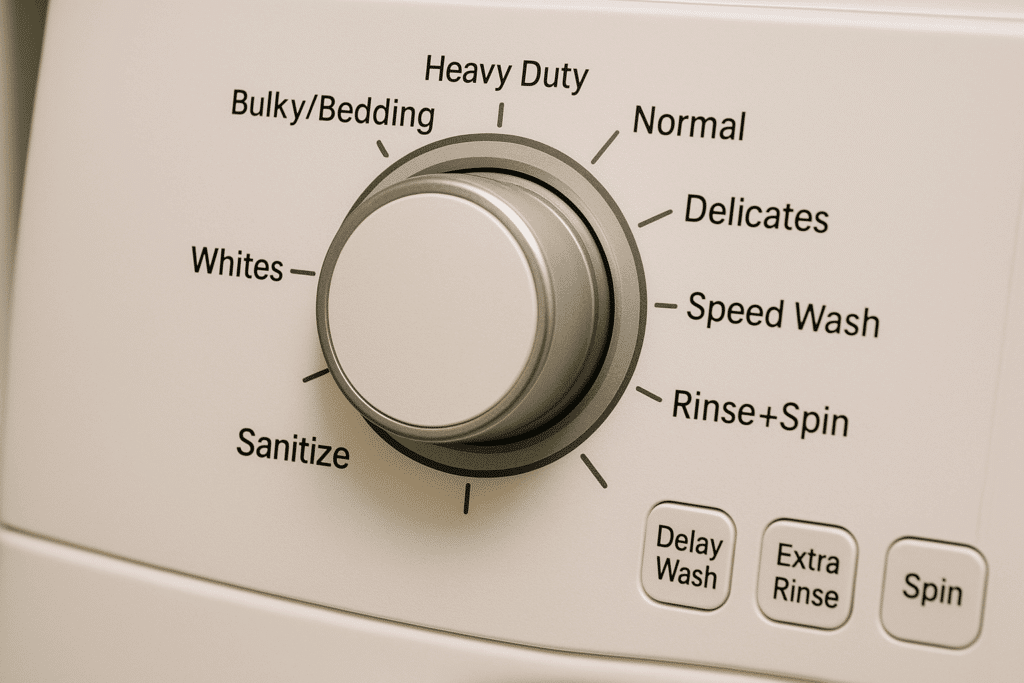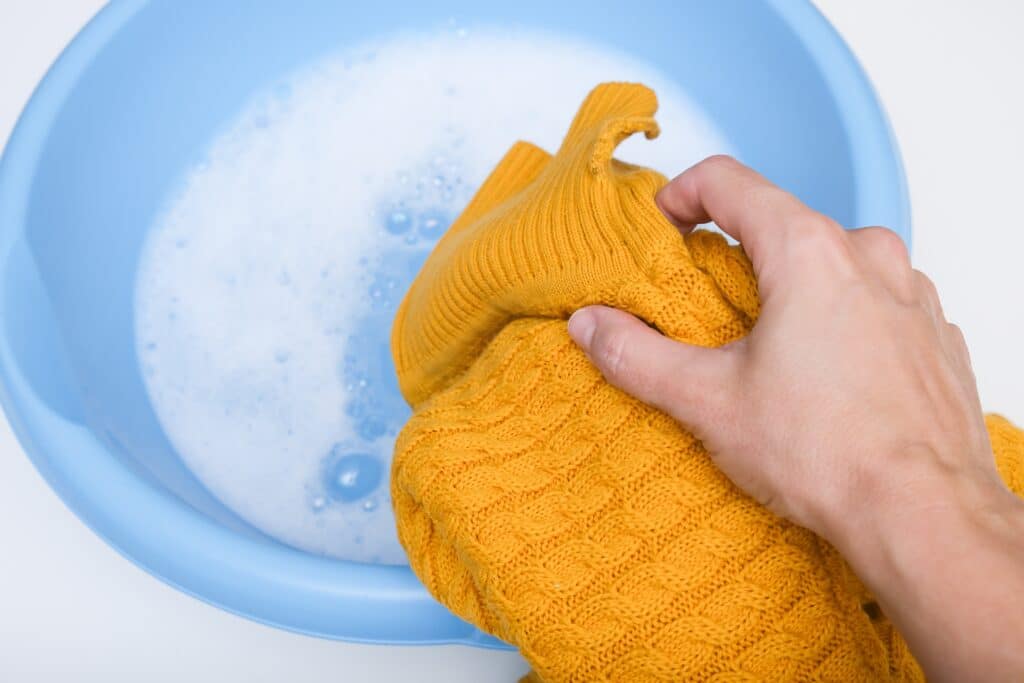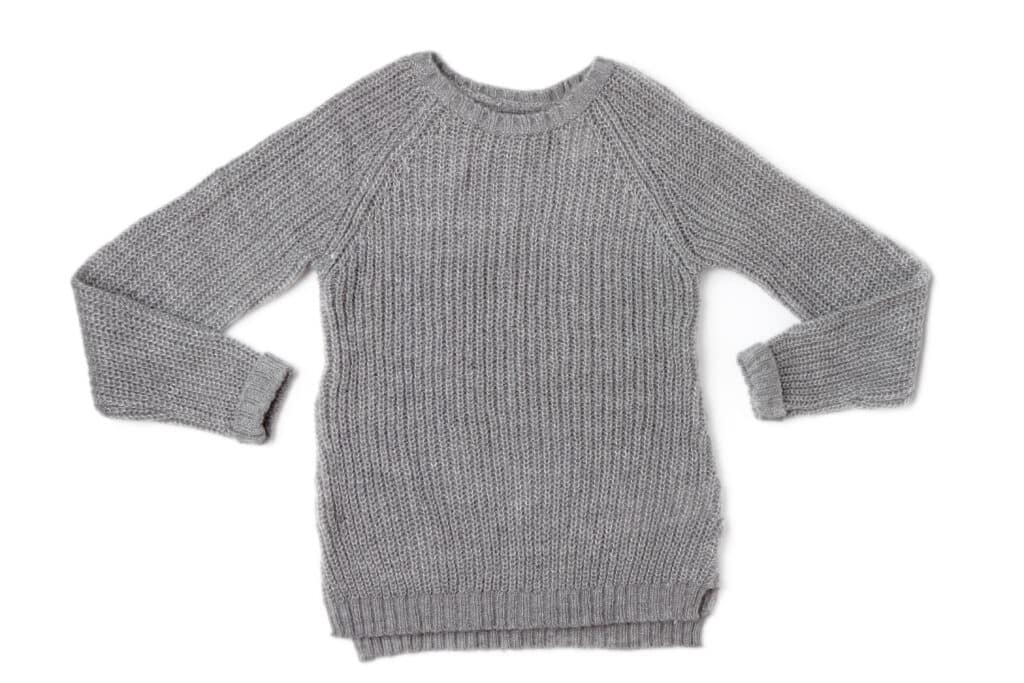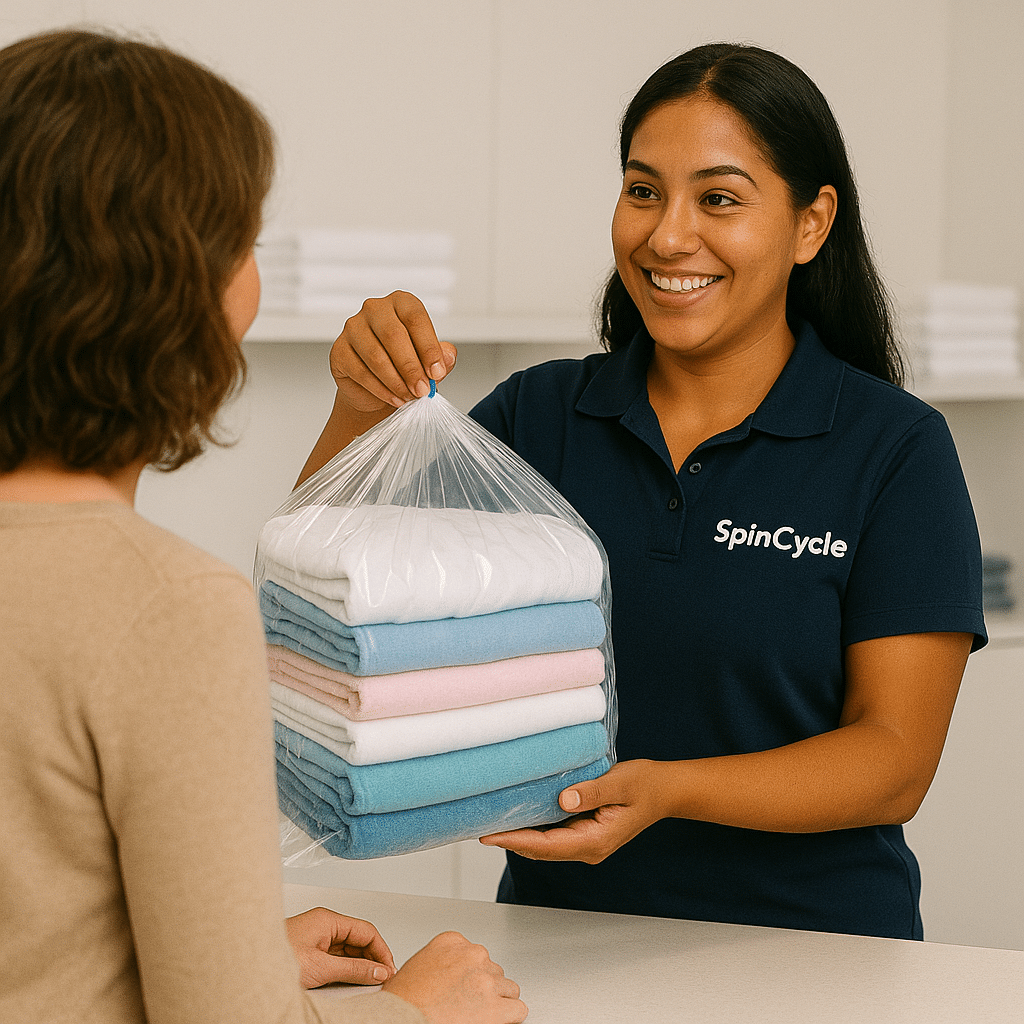Hand Wash Cycle vs Delicate Cycle: What’s the Difference?
Ever stared at your washer’s settings and wondered about the hand wash cycle vs delicate cycle? If so, you’re not alone. Modern washing machines often feature both a “Delicate” cycle and even a “Hand Wash” cycle, and it’s easy to be confused about when to use which. Laundry is a never-ending chore (nearly half of American families wash 7+ loads per week), so we all look for shortcuts – but using the wrong cycle can wear out your favorite clothes faster. As a Chicago-owned laundromat, we’re clean-obsessed and laser-focused on saving you time, so in this guide we’ll explain these gentle cycles in plain language. You’ll learn how each cycle works (agitation, water temperature, spin speed, fabric types, etc.), and get scenarios and tips to keep your delicates looking new. Let’s dive in so you can wash smarter and keep your clothes neighbor-approved and long-lasting.

What Is the Delicate Cycle?
The delicate cycle (sometimes labeled “Gentle”) on your washer is a low-intensity cycle designed to protect fragile fabrics. Compared to a normal wash, the delicate cycle uses cold water, a gentle or slow agitation, and a low spin speed. This means clothes are tumbled and spun more tenderly, helping prevent stretching and fraying. In a delicate vs normal wash comparison, delicate settings are much gentler on fabrics and often add a bit more water to cushion the clothes during the wash.
Use the delicate cycle for garments that call for “gentle” treatment. For example, if a clothing label says “machine wash – delicate cycle”, you’ll want to select delicate on your washer. This cycle is ideal for lightweight, delicate or loosely woven materials that can be easily damaged by vigorous washing. Think of items like:
- Silk blouses and camisoles – Natural silk fibers can break or shrink with high heat and heavy agitation. The delicate cycle’s cool water and slow spin help protect their sheen and shape.
- Lingerie and lace – Bras, lace underwear, and chiffons do best with gentle tumbling. (Better yet, put these in a mesh laundry bag for extra protection against snagging.)
- Dress shirts or woven tops prone to wrinkles – The delicate cycle’s lower spin can reduce wrinkling for cotton or synthetic blouses and shirts, so they come out less creased.
In general, use Delicate for lightly soiled clothes or fabrics like rayon, bamboo, thin synthetics, and fine knitwear. Heavily soiled items or sturdy fabrics (denim, towels) need a stronger cycle. But for anything that you’d classify as “delicate” – from a lace curtain to a satin sleepwear set – the delicate cycle is a safer bet than the regular cycle. It provides a thorough, but gentle wash that helps avoid shrinkage, stretching, or pilling of fibers.

What Is the Hand Wash Cycle?
Many washers today also offer a Hand Wash cycle, which is an even gentler wash setting intended to mimic washing by hand. According to laundry experts, the hand wash cycle is “the most gradual, kindest one possible” – with no agitation, very low (or no) spin, and only cold water to avoid harming fabrics. In other words, the machine barely moves the clothes around compared to any other cycle. This cycle typically lets garments soak and lightly swish, almost as if they were being gently rubbed in a basin by your hands.
The hand wash cycle is made for items that you’d normally wash delicately in the sink. Not every washer has it, but if your washing machine has a Hand Wash setting, it’s designed for extremely sensitive materials. For example, you might use it for:
- Wool, cashmere, and angora sweaters – These can shrink or felt with heat and agitation. The Hand Wash cycle’s cold water and slow movements help prevent wool fibers from matting.
- Embellished or sequined garments – A beaded dress or sequined top should get minimal mechanical action. Hand Wash will clean it with a soft touch (but when in doubt, turn such items inside out and use a mesh bag as well).
- Hand-knit or crocheted pieces – A hand-knit scarf from grandma or a crocheted blanket has loose fibers that could snag or stretch in a normal cycle. Hand Wash treats them extra gently.
In fact, the Hand Wash cycle is essentially an ultra-delicate mode. It’s even gentler than the delicate cycle on most machines. If your item’s care tag says “hand wash only,” this cycle might seem like a convenient substitute for literal hand washing. However – and this is important – hand-wash-only truly means by hand. Even the gentlest machine cycle isn’t as delicate as washing in a basin, so there’s still some risk involved (more on that below). Always check the garment’s label and when in doubt, err on the side of caution. If an item is very precious or fragile, we treat it with the care it deserves – sometimes that means hand washing in the sink despite the machine’s promises.

Hand Wash Cycle vs. Delicate Cycle: Key Differences
So, is hand wash the same as delicate cycle? The short answer is no – they are similar in purpose but have some key differences in how they operate. Here’s a quick comparison of Hand Wash vs Delicate:
- Agitation: The delicate cycle uses a light agitation or slow tumbling to loosen dirt, whereas the hand wash cycle uses little to no agitation. In many machines, the hand wash setting gently swirls water without the aggressive back-and-forth motion of even a delicate wash.
- Spin Speed: The delicate cycle typically has a low-speed spin (to remove water without stretching clothes). The hand wash cycle, by contrast, often uses a very slow spin or none at all. Clothes might come out more dripping wet from a Hand Wash cycle because the machine is being extra careful not to wring them out.
- Use Cases: Both cycles use cold water and cater to sensitive fabrics, but the Hand Wash cycle is intended for the most fragile, “hand-wash-only” type items (woolens, embellished pieces, fine lingerie). The Delicate cycle is suited for “machine-washable delicates” – things like silk, satin, lace, or synthetic blends that can handle gentle machine motion.
In practice, if your washer has only one of these cycles, use it for any garment that needs gentler care than a regular cycle. If your washer has both, use the Hand Wash cycle for the absolutely delicate stuff and the Delicate cycle for everything else on the gentle spectrum. Both are far more gentle than a normal wash cycle, helping you avoid the damage that a heavy-duty wash could cause on fine fabrics. As one laundry professional put it, even though these cycles greatly reduce the risk, “I would not put vintage, beaded, or sentimental items in either cycle… If I cannot replace the garment, then I give it a hand wash in the sink”. That’s a good rule of thumb: if an item is irreplaceable or extremely delicate (wedding dress, heirloom christening gown, etc.), skip the machine entirely and wash it carefully by hand.
When to Use the Delicate Cycle vs. the Hand Wash Cycle
When to Use Delicate
The delicate cycle is your go-to for everyday garments that need a gentler touch. Use Delicate for lightweight, lightly soiled or textured fabrics that might get stretched or scuffed in a regular wash. This includes items like:
- Sheer fabrics and thin knits: Sheer curtains, thin summer dresses, or soft t-shirts benefit from the delicate cycle’s mild handling.
- Blouses and tops marked “gentle”: Many silk or polyester blouses, as well as shirts that wrinkle easily (linen or fine cotton), do well on Delicate. The lower agitation helps prevent fiber breakage and the slower spin means fewer set-in wrinkles.
- Activewear and stretchy clothing: Yoga pants, leggings, and sports bras often have elastic fibers that can wear out with rough washing. A delicate wash (cold water, mild spin) helps preserve their stretch and wicking ability.
In short, choose the delicate cycle for anything you’d be nervous to throw in a normal wash with jeans and towels. It’s perfect for protecting clothes that are important to you but are labeled as machine-washable. Delicate will get them clean while minimizing wear and tear.
When to Use Hand Wash
The Hand Wash cycle is best for truly delicate and special-care items. Turn to this setting (if your machine has it) for garments you’d normally hand wash one by one. Good candidates include:
- Woolens and cashmere: Sweaters, scarves or blankets made of wool, cashmere, or angora. The hand wash cycle’s gentle rocking motion and cold water help prevent shrinking and felting of the fibers.
- Heavily embellished pieces: Dresses or clothes with sequins, beads, appliqués, or embroidery. These decorations can get snagged or torn in rough cycles; the Hand Wash setting cleans with minimal disturbance.
- Delicate lingerie and intimates: Silk slips, expensive bras, or underwear with delicate lace. Even on Delicate, underwire bras can get misshapen, so Hand Wash (plus a mesh bag) is preferable for the most delicate intimates.
Always double-check the care label before using the hand wash cycle. If it explicitly says “hand wash only,” be cautious. This cycle can be a time-saver for busy folks who can’t always wash things by hand, but it’s not magic – extremely fragile clothes might still be better off being swished in a basin personally. When using the Hand Wash cycle, consider placing items in a mesh laundry bag for an extra buffer, and don’t mix them with heavier garments. We recommend running only similar delicate items together on this cycle (for example, a few sweaters or a few lacy items, but not a mix of a sweater with a pair of jeans).

Can You Wash “Hand-Wash Only” Clothes in the Washing Machine?
This is a common question, and the safest answer is: not if you want zero risk. If a garment is labeled “Hand Wash Only”, the manufacturer believes the agitation and spinning of any machine cycle could damage it. In practice, many people do use the delicate or hand wash cycle on “hand-wash-only” clothes – and often get away with it – but there’s always some risk involved.
If you choose to machine-wash a hand-wash-only item: use the most gentle setting available (Hand Wash cycle preferred, or Delicate if that’s all you have). Cold water is a must, and definitely put the item in a mesh bag. This combination will give you the highest chance of a safe outcome. Even so, be prepared for the possibility of slight shrinkage or change in texture over time. For example, a pure wool sweater may come out fine on the hand wash cycle once, but repeated machine washes could make it less fluffy or a tad smaller.
From our experience, it also depends on how much you value the item. If it’s a pricey silk blouse from a designer or a sentimental piece, we’d strongly advise against machine washing. Those are best washed by hand in a basin – or brought to a professional cleaner – to be safe. On the other hand, if it’s a $10 thrift store find and you’re short on time, you might decide it’s worth the gamble to use the delicate cycle. As one laundry writer put it, using gentle machine cycles is hugely convenient, but hand washing certain cherished items is still the best idea. It really comes down to balancing convenience vs. potential damage.
Remember, even the finest washing machine with a hand wash cycle cannot replicate the absolute tenderness of true hand washing. There’s always some movement and mechanical action. So our rule is: when in doubt, don’t machine it. We physically hand wash or spot-clean extremely delicate garments for our clients if needed, because we’d rather play it safe than risk a beautiful piece getting ruined in any washer.
The good news is that for the majority of “delicate” clothes – those made of silk, cotton, synthetic blends, etc., without significant ornamentation – the delicate cycle (or hand wash cycle) does a great job cleaning them with minimal wear. Use your judgment: if an item feels fragile like tissue paper or has sentimental value, stick to hand washing. For everything else, your machine’s gentle cycles can be a fabric-saver and a time-saver.
Extra Care Tips for Delicate Fabrics
No matter which cycle you use, a few extra steps will ensure your delicate vs normal wash routine keeps clothes in top shape:
- Read the tag and prep: Always check your garment’s care label for guidance (it might specify water temperature or “lay flat to dry”). Before washing, close any zippers or hooks on delicate items (for example, clasp your bras) to prevent snags. Turn garments inside out to protect their outer finish.
- Use the right detergent (and dose): Choose a mild, gentle detergent formulated for delicate fabrics. Avoid bleach and harsh chemicals on fragile items – they can weaken fibers or cause discoloration. (For odor removal without tough chemicals, a splash of white vinegar in the rinse can work wonders.) Also, don’t overdo the detergent: delicate loads usually don’t need much. In fact, too much soap can be hard to rinse out, leaving residue that stiffens fabrics.
- Dry with care: Heat can be the enemy of delicates. Whenever possible, air dry your delicate and hand-wash items. After washing, gently press out excess water (don’t wring!), then lay sweaters and knitwear flat on a towel or a mesh drying rack to dry. For silky blouses or lingerie, hang them or lay flat as directed by the tag. If you must use a dryer, select a tumble dry “no heat” or air dry setting. A brief, no-heat tumble can help fluff fabrics without shrinking or warping them. Adding dryer balls or a clean towel can also help absorb moisture and speed up air-drying in the machine.
By following these tips – gentle cycles, gentle detergent, and gentle drying – you’ll extend the life of your delicate clothes and keep them looking their best. Our_clean-obsessed_ team at SpinCycle has seen firsthand that a little extra care goes a long way in preserving fabric quality. In fact, our machines even use ozone sanitization for an extra layer of clean without needing harsh chemicals (so your items come out fresh and thoroughly sanitized while being fabric-friendly).

Saving Time and Clothes: Decoding the hand wash vs delicate cycle dilemma is just one part of making laundry easier. The other part is knowing when to let someone else handle it! If you’re a busy Chicagoan with a pile of “gentle wash” garments and zero free time, let your neighbors at SpinCycle help out. We offer convenient Wash & Fold drop-off service where our experts will separate your delicates, wash them on the right cycle, and return them in ozone-sanitized, drawer-ready folds. For the ultimate convenience, you can even schedule a pickup & delivery – we’ll collect your laundry from your doorstep and bring it back clean and neatly packaged, so you never have to worry about which cycle does what. Prefer doing laundry yourself but need a better machine? Come by our self-service laundromat, where you can use our high-end washers (complete with all the specialty cycles) and dryers. We’re proud to be Chicago-owned and transparent about our pricing, so you’ll always know what to expect.
In summary, the delicate and hand wash cycles are fantastic tools to have in your laundry arsenal. They allow you to clean “difficult” garments with far less risk of damage. Use Delicate for most of your machine-washable finery, reserve Hand Wash for the truly fragile stuff, and don’t hesitate to hand wash or seek professional help for those one-of-a-kind pieces. By choosing the right cycle for the right fabrics – or trusting a neighbor-approved service like SpinCycle to do it for you – you can keep your wardrobe in great shape and save yourself from laundry day stress. After all, life’s too short (and closets too full) to ruin clothes by using the wrong wash cycle. Happy washing!


